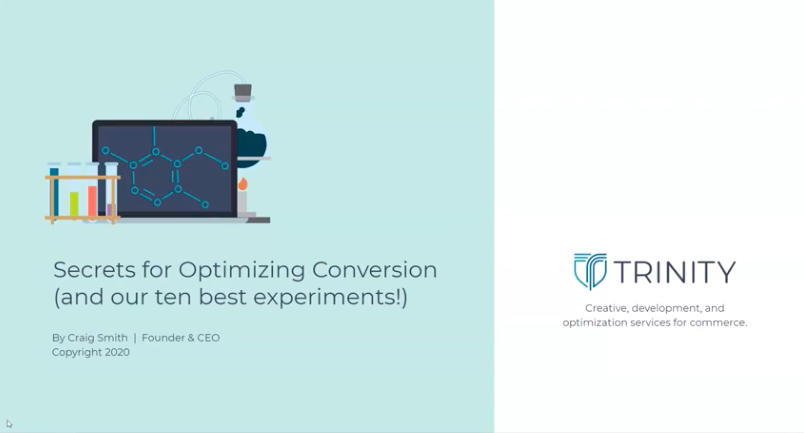Proper eCommerce navigation is a critical element of exceeding shopper expectations. If customers find your page confusing or hard to navigate, they’ll leave and shop somewhere else. Taking time to create thoughtful, research driven and easy-to-understand site structure will help you improve your eCommerce sales.
Your website’s design should focus on combining both the company’s brand and personality, without sacrificing usability, and letting customers find products in the way that makes sense for them.
Top-Level Navigation & Labels
The smallest of changes to your navigation runs the risk of confusing your customer, even someone who knows exactly what they’re looking for. This is one reason why so many different sites use the same menu templates. Websites that have easy-to-read and simple titles for their navigation bar, placed at the top or left of the page, typically have sessions that drive more interactivity.
The naming conventions of your categories should be precise and clear, so users can easily discern the meaning of each page listed. Have a limited number of “broad” parent categories, and then put more specific terms under them. This will help keep your top navigation uncluttered. Place these child categories in a dropdown or “flyout menu. With this approach, a user will be directed to a landing page for that category quickly and effectively.
Alternatively, if you have large categories featuring dozens of subcategories, a left navigation panel that expands to provide relevant links. eCommerce giants like NewEgg and Target use this to give their customers near-instant access to the products they’re seeking.
NewEgg Navigational Layout – Jan 2016
Navigational Layout on Target.com – January 2016
Visuals
As customers browse your site, it’s important to give them cues so that they know what section they’re in, particularly if you have an eCommerce site with thousands of products. One way to do this is by using small icons or graphics to represent your headings. These visuals can add personality to your brand, allowing you to make the site an experience that is unique to the culture you hope to promote, whether that’s a perception of luxury or whimsy.
Adding a “What’s New” label to your site navigation can also be helpful for returning visitors, highlighting your latest and greatest products. For new customers, it gives them a place to start browsing by offering them a snapshot of what the latest trends in your industry are.
Another way to assist customers in navigating your site is to use product images themselves to help highlight subcategories within your store. Build.com uses example products from each lighting category on their site, giving shoppers a simple way to identify the type of fixture they’re searching for and take them to the right page to find it.
Build.com Picture Driven Navigation – January 2016
Don’t Hide Your Sub-Categories
Be sure to list subcategories in multiple places. This is helpful to your customers who may be searching for something specific but aren’t sure exactly where to find it. For example, someone looking for a scarf might check your accessories category, or they could look for it under hats and gloves.
Having your subcategories listed in as many places as possible ensures your customers will find what they’re looking for. Don’t create separate pages for each sub-category placement, instead send users from both broad categories to the same category page. This will help you deduce the change for accidentally creating duplicate content on the site.
A great way to assess the effectiveness of your sub-category presentation is by using automatically rendering surveys based upon exits asking the question “did you find what you were looking for”? More than 25% saying no – then you got some problems to deal with.
Prioritize Search
Make sure to make your search box front and center within your core design templates. There’s a reason every major eCommerce retailer prioritizes search. In studies we conducted with our clients at Trinity, we found that search based sessions on average convert 20-50% higher than standard navigation sessions alone.
Use the data you collect from visitors’ search history to discern what your shoppers are most commonly looking for. Highlight popular searches on your site to meet your visitors’ most frequent needs.
An added benefit of analyzing site search data is the ability to identify additional categories that represent merchandising opportunities as well as new naming conventions to integrate into your categories and product level text and metadata.
The latest design approach? Check out Wal-Mart and their search box inclusion within the header of their browser presentation.
Potential hypothesis or test within your site: As high as you can place the search box in a coherent presentation the more volume of searches you will receive.
Wal-Mart’s header based site search presentation
Final Thoughts on Navigation
These are some basic fundamental aspects to improve your navigation.
Track separate segments of users who use site-search versus category driven paths as a way to review usage and effectiveness of your search and navigation.
Dollars per visit created as well as overall session conversion will provide great intelligence into your site performance.
As in everything in digital, view the optimization of your navigation as a marathon not a sprint. Standards and technologies change rapidly, while consistent incremental wins drive sales increases. Optimize your navigation and you’ll increase retention, conversion and average values.
The key is to never stop improving and always measure. The ideal site is one that gives the customer exactly what they want, every time. The only way to get closer to this lofty goal is by constantly assessing your user behavior and working to improve upon it.
As always, contact us to discuss how your navigation can be optimized for sales growth.




